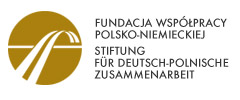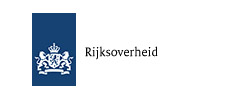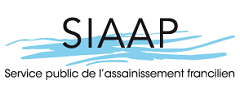First ever conference on chrysotile asbestos and health in Kazakhstan
Participants of high level international expert conference organized by WECF, agree on a resolution
24.04.2009 |WECF Report

Kazakhstan - For the first time in Kazakhstan a public open debate was held this week to discuss the issue of chrysotile asbestos
For the first time in the history of Kazakhstan a public open debate was held last week to discuss the issue of chrysotile - white - asbestos. The High Level International Expert Conference on “Asbestos and POPs – policies and practices in Kazakhstan and the European Union" in Astana, Kazakhstan, brought together, for the first time, 75 participants from all sectors to discuss strategies for asbestos and POPs, (persistent organic pollutants).
For the German report scroll down the page...
Participants to the conference adopted a resolution with recommendations on asbestos and POPs to the Kazakh government and offered support for a national program to eliminate asbestos related diseases, in which the World Health Organisation will cooperate.
Sensitive issue
Asbestos is a sensitive issue in Kazakhstan. Some 220.000 metric tons are produced every year. Currently asbestos containing materials are used without restriction in public buildings like hospitals, schools and kindergartens, brakes and other materials in Kazakhstan.
Ivan Ivanov of the World Health Organisation (WHO) highlighted that recently the International Agency for Research on Cancer (IARC), has reconfirmed the classification of chrysotile asbestos as human carcinogen and confirmed that Chrysotile causes mesothelioma and cancer of the lungs, the larynx, and the ovary. Both organisations have concluded that there are safer substitutes for all uses of chrysotile asbestos and that it is very difficult to control exposure to asbestos, particularly in resource constraint settings and that is very difficult and costly to remove asbestos already in place.

Risks to human health
The new vice-minister of Environment, Mr. Majit Turmagambetov, chaired the high-level segment of the 2-day conference, in which the head of the European Commission Delegation to Kazakhstan, Norbert Jousten, formulated his strong support for the conference saying that more information on asbestos is necessary and this will create a better environment for the people in Kazakhstan. The French Ambassador, Mr Alain Couanon, compared the situation in Kazakhstan to his own country, which along with 40 other nations has banned all uses of asbestos, indicating that the mortality from asbestos in France has reached more than 35.000, and could rise to an estimated total of 50 to 100.000. He also emphasized that asbestos was the leading cause of occupational cancer in France.
The Netherlands Ambassador, Mr. Klaas van der Tempel explained that his country was a great user of asbestos – in i.e. housing, brakes, roads, flooring – despite first warnings as early as 1932, that asbestos was linked to diseases and the recognition of asbestosis in 1949. The Netherlands regulated asbestos in several stages, with a first ban of “blue” asbestos in 1993, and not until 1998 a ban of all types and uses of asbestos, including “white”, or chrysotile asbestos. But this is not the end, but the beginning of the problem, as the great cost of the previous asbestos use will only now appear. Studies showed that, had the Netherlands taken measures to ban asbestos when first signs of the problem became clear, in the 1930s, 34.000 lives could have been saved.

Rotterdam Convention
The Deputy Director General of the German Ministry for the Environment, Mr. Alexander Nies, emphasized “that more than 40 countries had already banned the production and use of chrysotile asbestos because of its proven cancerogenity to humans. For countries like Kazakhstan with continuing chrysotile industry it is of utmost importance that adequate risk management measures are in place. Listing of chrysotile in the Rotterdam Convention would support the dissemination of risk-related information to importing countries and enable them to take risk-informed decisions to protect their citizens.”

Kaisha Athakanova, President of the Kazakh environmental NGO network Eco Forum and Sascha Gabizon, WECF Executive Director were extremely satisfied with the outcome of the conference: “the joint resolution is a milestone for Kazakhstan in terms of asbestos. Never before the issue of potential hazards and health risks of white asbestos have been the subject of open dialogue. This was a real historic conference, which has opened the door in the right direction”.
Asbest in Kasachstan
Kasachstan, zweitgrößter Erzeuger von Weißasbest, diskutiert erstmals öffentlich auf einer High Level Konferenz in Kasachstan über Asbest und Gefahren für die Gesundheit – WECF spricht von historischem Ereignis
Erstmals in der Geschichte Kasachstans haben Vertreter der kasachischen Regierung und der Asbestindustrie, zusammen mit Vertretern der Weltgesundheitsorganisation, ausländischer Botschaften und Regierungen, Wissenschaftler sowie Nichtregierungsorganisationen in Kasachstan einen öffentlichen Dialog zum Thema Asbest und dessen Risiken für die menschliche Gesundheit geführt. Kasachstan ist der zweitgrößte Produzent von Weißasbest weltweit. Informationen über Gesundheitsrisiken durch Asbest sind der Öffentlichkeit bis dato nicht zugänglich. Auf der Tagesordnung standen Strategien für den Umgang mit Asbest und persistenten organischen Stoffen (POPs). Die Konferenz verabschiedete eine Resolution zu Asbest und POPs. Darin wird die Regierung von Kasachstan aufgefordert, an einem „Nationalen Programm zur Beseitigung asbestbedingter Krankheiten“ der WHO und ILO teilzunehmen. Des Weiteren fordert die Konferenz die Regierung von Kasachstan auf, über eine Aufnahme von Weißasbest in den 3 Annex der Rotterdam Konvention nachzudenken.
Asbestos in Kasachstan
Asbest ist ein sehr sensibles Thema in Kasachstan. Kasachstan ist weltweit der zweitgrößte Produzent von Weißasbest. Mehr als 220.000 metrische Tonnen werden jährlich produziert. Gegenwärtig werden in Kasachstan Materialen, die Asbest enthalten, uneingeschränkt in öffentlichen Gebäuden wie Krankenhäuser, Kindergärten und Schulen, in Bremsen und anderen Bereichen genutzt.
Die UN Organisation ILO (International Labor Organisation) schätzt, dass weltweit jährlich circa 100.000 Menschen an den Folgen asbestbedingter Krankheiten sterben. „Auch Weißasbest, wie er in Kasachstan produziert wird, kann nach Untersuchungen der International Agency of Cancer, Mesothelioma, Lungen-, Kehlkopf- und Eierstockkrebs hervorrufen“, bestätigt Ivan Ivanov, der als Vertreter der WHO an der Konferenz teilnahm.
Bittere Erfahrungen der Konferenzteilnehmer
Norbert Jousten, der Leiter der Delegation der Europäischen Kommission in Kasachstan betonte auf der Konferenz gegenüber dem neuen stellvertretenden kasachischen Umweltminister Majit Turmagambetov die Wichtigkeit dieser erstmals stattfindenden Konferenz. Die Konferenz behandle, so Jousten, ein äußerst wichtiges und sensibles Thema für die öffentliche Gesundheit. Der französische Botschafter Alain Couanon verglich die Situation Kasachstans mit der seines eigenen Landes. Neben 40 weiteren Ländern hat Frankreich die Verwendung von Asbest verboten. Couanon bestätigte, dass in Frankreich mittlerweile mehr als 35.000 Menschen an asbestbedingten Krankheiten gestorben seien, in den nächsten Jahren könne die Zahl bis auf 100.000 ansteigen. Der Botschafter der Niederlande Klaas van der Tempel ergänzte, dass auch sein Land ein großer Nutzer von Asbest war, obwohl bereits seit den 1930er Jahren Asbest mit Lungenerkrankungen in Zusammenhang gebracht wurde. Als Folge der Nichtbeachtung der Fakten haben die Niederlande in die medizinische Behandlung von Asbestopfern und die Beseitigung von Asbest mehr als 32 Milliarden Euro investiert – ganz abgesehen von den ebenfalls vielen Asbesttoten. „Hätten wir bereits in den 1960er Asbest verboten statt erst 1992, hätte das 32.000 Leben retten und viel Geld sparen können“, bedauert van der Tempel.
Der Vertreter des deutschen Bundesumweltministeriums Alexander Nies erklärte, dass es in Ländern wie Kasachstan, in denen es immer noch eine Weißasbestindustrie gibt, von äußerster Wichtigkeit sei, adäquate Maßnahmen zum Risikomanagement zu installieren. Würde Weisasbest in die Rotterdam Konvention aufgenommen werden, könnten Importländer über Risiken informiert werden, auf deren Basis sie Entscheidungen zum Schutz ihrer Bürger treffen könnten. Ferner würde die Listung von Weißasbest in der Rotterdam Konvention den Austausch zwischen Asbestexport- und –importländern und der kasachischen Regierung darin unterstützen mit ihren Handelspartnern ins Gespräch zu kommen.
Kaisha Atakhanova, Präsidentin des kasachischen Umwelt Eco Forum und Sascha Gabizon Direktorin von WECF, zeigten sich äußerst zufrieden mit dem Ergebnis der Konferenz: „Die gemeinsame Resolution ist ein Meilenstein für Kasachstan hinsichtlich des Asbests. Niemals zuvor waren mögliche Gesundheitsgefahren durch Weißasbest überhaupt Thema eines öffentlichen Dialogs. Eine wirkliche historische Konferenz, die eine Tür in die richtige Richtung aufgestoßen hat.“
Die Expertenkonferenz zu „Asbest und POPs – Politik und Praxis in Kasachstan und der Europäischen Union“, die vergangene Woche mit 75 Teilnehmern in Astana, Kasachstan stattgefunden hat, wurde vom europäischen Umwelt- und Frauennetzwerk WECF – Women in Europe for a Common Future und deren kasachischen Partnerorganisation Eco Forum organisiert. Mitfinanziert wurde die Konferenz von der Europäischen Kommission in Kasachstan und vom deutschen Umweltministerium.
Related News
Asbestos in Kazakhstan - project results
Kazakhstan is one of the biggest producers and consumers of asbestos, but the public is hardly informed about the dangers surrounding them in daily life
20.05.2011 | Alexandra Caterbow
WECF co-organised International Expert Conference and recommends better control of hazardous substances in Russia
For the first time in Russia a public open debate was held this week to discuss the accession of the Rotterdam Convention by the Russian Federation and the issue of chrysotile asbestos
18.10.2010 | WECF news
WECF at Asia and Pacific Region Ministerial Conference in Astana, 2010 - Recommendations and Opportunities for Green Growth
Lessons on environmental challenges on uranium and asbestos mining in Kazakhstan
07.10.2010 | WECF News
CSD 18: “Asbestos – who pays the bill? WECF Lunch Event at UN Commission for Sustainable Development
Testimonies and Dialogue on Policy Recommendations” In the framework of the 18th session of the UN Commission for Sustainable Development (CSD) in New York, May 6, 2010
11.06.2010 | WECF Report
CSD 18: WECF member speaks at high level UN conference on need for global uranium mining monitoring and clean-up
WECF member Kaisha Atakhanova speaks on the need for stronger control of uranium mining
30.05.2010







































